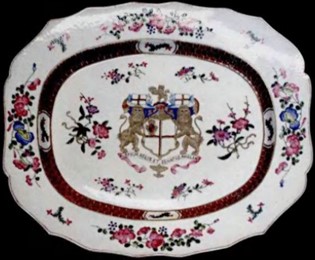Research on Guangcai Porcelain under the Fusion of Eastern and Western Art Contexts
Abstract
Guangcai porcelain was born during the Kangxi period of the Qing Dynasty, and its historical trajectory as an outstanding representative of Chinese export porcelain is closely intertwined with the expansion of globalized trade networks. In the 18th century, the “China Fever” in Europe gave rise to a fervent demand for Oriental porcelain, and Guangcai porcelain became an important carrier of material and cultural exchanges between the East and the West by virtue of the geographical advantage of the Guangzhou port. Its uniqueness lies in the fact that it not only retains the oriental heritage of traditional pastel and enamel craftsmanship, but also takes the initiative to absorb Western aesthetic needs, combining the complex curves of the Rococo style, the European aristocratic coat of arms and the traditional Chinese birds and flowers into one. This kind of cross-cultural creation is not a simple superimposition of patterns, but is based on the craftsman's in-depth understanding of foreign cultures and re-creation. In the early stages of globalization, Guangcai porcelain already demonstrated the pioneering nature of cross-cultural fusion, and its rise and fall mapped the subtle changes in power relations between the East and the West, and became a precious sample for the study of the interactions between art and commerce, and between the local and the global.
References
[2] Zheng, Z. (2023). Analysis of the commercial value of China's intangible cultural heritage Guangcai——A study based on SWOT analysis. In Proceedings of the 2nd International Conference on Financial Technology and Business Analysis (Part 4) (pp. 730–736). Cardiff Business School, Brunel University London, University of Aberdeen Business School, Danubius University of Galați.
[3] Yiu, W. D., Wan, P. W., Ng, W. F., & others. (2014). Sentimental drivers of social entrepreneurship: A study of China's Guangcai (Glorious) Program. Management and Organization Review, 10(1), 55–80.
[4] Yuan, Y. (2024). Influences between Chinese Ming and Qing dynasty porcelain and European Rococo style. In SHS Web of Conferences (Vol. 199, p. 04006). EDP Sciences.
[5] Han, C., Lei, S., Mingming, W., & others. (2021). Innovative design of traditional calligraphy costume patterns based on deep learning. In Journal of Physics: Conference Series (Vol. 1790, No. 1, p. 012029). IOP Publishing.


This work is licensed under a Creative Commons Attribution 4.0 International License.
Copyright for this article is retained by the author(s), with first publication rights granted to the journal.
This is an open-access article distributed under the terms and conditions of the Creative Commons Attribution license (http://creativecommons.org/licenses/by/4.0/).









1.png)














